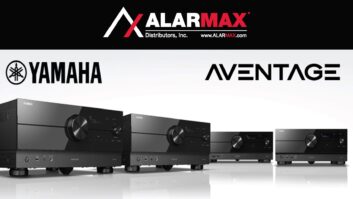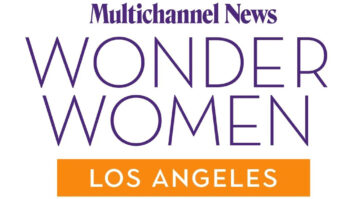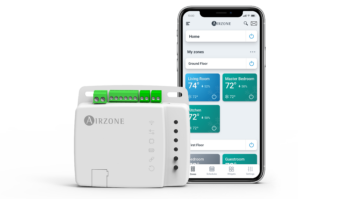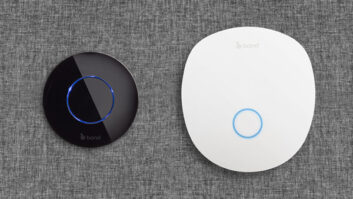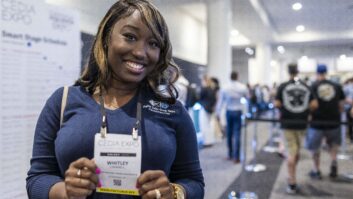The resurgent PC market and consumers’ willingness to spend on new IT product types helped create a healthy sales environment for the first half of 2004, and vendors see the latter half being more of the same.
Overall computer sales were the big hit during the first part of the year with notebooks being by far the most popular choice among consumers, according to several major PC vendors.
“In the first quarter, our total PC units for the U.S. consumer business grew 22 percent year-over-year. If you just take a look at notebooks, units were up 39 percent year-over-year,” said Dell’s Michael Farello, marketing and eBusiness VP, U.S. consumer segment.
Hewlett-Packard saw sharply increased penetration of desktop models with DVD burners, said Tom Markworth, product marketing manager, North America consumer computing.
“HP sold its first HP-branded retail PC with a DVD+RW drive for under $699 in April of this year. The HP Pavilion a520, which launched at $679.99, net of rebate, completely blew away our expectations,” Markworth said, “As DVD burners have fallen in price, they’ve gone from being niche components for hobbyist video editors to everyday tools for consumers looking to do direct-to-DVD burning and to make backups of digital photo, music and personal data.”
Gateway was pleasantly surprised with how well its recently acquired eMachines’ notebooks sold, particularly the model 6805, said Ed Fisher, Gateway’s senior VP/product planning. This device uses an AMD-built processor, which helps differentiate it from most of the other notebooks on the market.
“eMachines’ notebooks are starting to resonate with the consumer. This is a very difficult market competing with Hewlett-Packard and Toshiba, but we managed to get 16 percent of the notebook market share for the first week of June according to NPD,” he said.
Mona Pal, Toshiba’s product management group manager, said consumers buying notebooks for both personal and SO/HO use were responsible for the category’s splendid performance. For Toshiba, the addition of the DVD Super Multi Drive that can burn to DVD Dash and Plus blank media was a big draw, she said, as it gave consumers peace of mind. These drives proved so popular that Toshiba now uses them exclusively for its DVD burner-equipped models.
HP’s consumer notebooks continued to show strong growth the first half of the year, Markworthy said, adding, “Basic notebook models under $1,200 now comprise almost half of the overall retail market. HP, however, has bucked the trend somewhat with both our HP Pavilion and Compaq Presario brands. We have enjoyed great success with higher-end models that offer large format LCD displays, DVD burners and built-in 802.11g wireless receivers.”
Notebooks were not the lone bright spot for the computer category. Giving a small, but still helping, hand were niche types like gaming computers. Farello said Dell’s Inspiron XPS gaming notebook that was introduced earlier this year gathered a strong following.
“We’re seeing good acceptance from gamers and technology enthusiasts who like our Inspiron XPS notebook that we launched earlier this year. In fact, the XPS brand is doing quite well for us in both the notebook and desktop categories,” he said, “Consumers like to customize these products for their specific uses, whether it’s for gaming, digital photography, editing or entertainment. We also know that gamers and other technology enthusiasts talk to other gamers about their choices, and this community has really embraced this product.”
In the PC segment, the latter half of the year should mirror what took place during the first six months with notebooks and gaming-centric computers selling well. Toshiba’s Pal said the research firm IDC is calling for a sales increase of 20 percent, compared with the last six months of 2003.
One important addition that is expected to help sales is the wider adoption of desktop and notebook computers utilizing the Windows Media Center Edition operating system. This OS, which is geared toward entertainment applications and comes only with specially configured computers, debuted last year and has since sold weakly, grabbing about 5 percent of the market.
Gateway’s Fisher expects Media Center Edition PCs to start catching on with consumers. This change of heart on the part of consumers will not come without a price. Microsoft and Intel are expected to boost their respective advertising and educational programs surrounding Media Center for the holiday season, which could lead to its share number easily doubling, Fisher said.
In addition, Gateway expects notebook computer sales to exhibit low double-digit growth for the remainder of the year, although the market could get even more cutthroat as pricing becomes heavily promoted. Fisher predicted a $599 notebook would be on the market by the end of the year.
The other major change for Gateway should be the introduction of its brand into the retail channel. Previously, the company only sold direct and through its now-defunct retail outlets, but Fisher said talks are being conducted with retailers to carry Gateway desktops and notebooks.
Dell and Toshiba see consumers becoming more attracted to Media Center computers as the entertainment aspect of computing becomes even more important.
“For Media Center PCs, we view them as part of a growing market and are seeing more customers getting used to managing their digital and entertainment content in an easy-to-use and organized fashion. This will become most interesting when the experience is seamless across the TV, the PC and portable devices,” Farello said.
“Entertainment has joined portability and productivity as being important,” Pal said.
She pointed to Toshiba’s just-introduced M35-S456 Special Edition model as hitting this particular sweet spot with consumers. It is heavy with A/V-oriented features, includes a DVD Super Multi drive, and has a monitor-in port for connecting extra devices like an Xbox or camcorder.
Despite the large role computers played in the first half, products like LCD monitors, printers and home networking kits played their part in making the first half successful for the IT category. These products, sales of which had carried the IT category for the past three years as computer sales floundered, performed quite well.
Samsung’s Sam Akkapeddi, VP of retail sales for its IT division, said the most pleasant surprise for the first six months of 2004 was the quick acceptance of larger-size LCD computer monitors by both consumers and small business customers. The company’s 213T 21.3-inch model sold extremely well, even with its $1,200 suggested retail price. Akkapeddi said this has set the stage for the second half of the year when Samsung expects LCD monitor sales to pick up by about 25 percent, compared to the first half when LCD panel shortages were causing some problems. June has already been a strong month, and this is expected to continue throughout the back to school selling period, he said.
The laser printer market, including color, monochrome and MFP, could also heat up later this year as Samsung and its competitors battle it out in the sub-$200 space.
Viewsonic also experienced a strong demand for larger screen monitors. The company said its best performing SKU for the first half was the 19-inch VX900.
“We believe this is due to the resonance our brand has with professionals and their desire to take the same performance they have on their desktops at work home with them. Other key factors are front-of-screen performance, attractive design and availability,” said Scott Elrich, Viewpoint’s senior product manager
Elrich added that the gaming market that is helping drive computer sales will have an impact on LCD monitors this year. These displays are finally approaching CRT-level capabilities, a fact that should not be lost on gamers who have stuck with the older technology for the most part because it delivers the quick refresh rates demanded by most graphically intense games.
“Current models, including the VX910, have panels that feature a response time of 16ms. However, later in the year, 12ms panels will begin to appear, and the VX910 will be updated with this new advancement in technology to deliver a smoother gaming and video playback experience with minimized ghosting or blurring,” he said.




